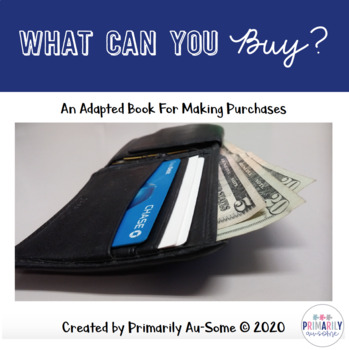What Can You Buy? (Making Purchases w/ REAL pictures!)
- PDF
Description
This fun adapted book is perfect for teaching the extended Math standards for grades 3-5:
MD.35.4c Solve addition 1-step, real-world word problems involving mass, volume, or money (e.g., following a recipe, paying for groceries).
The activity pack includes 3 books:
What Can I Buy? - Grocery Store Edition
What Can I Buy? - Toy Store Edition
What Can I Buy? - Clothing Store Edition
This product contains a set of short adapted books that helps students count money and determining what they can buy with the money that they have. Simply laminate, cut, assemble.
If you have any questions please don't hesitate to ask. This resource is the property of Primarily Au-Some (c) 2020.
This book is perfect for special education students with moderate to severe disabilities. Additionally, it goes perfectly with the Ohio Common Core Extended Standards.





